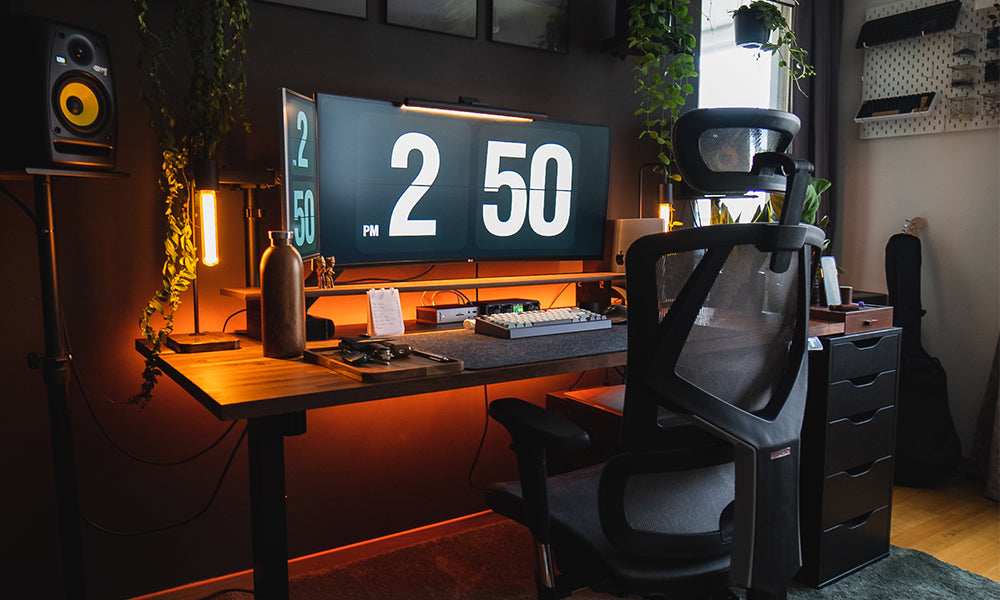In the world of modern offices, where we spend a significant portion of our lives, it's easy to overlook the impact that seemingly innocuous elements like office chairs can have on our health. Among the various health concerns associated with sedentary office jobs, spine damage is a prevalent and often underestimated issue. In this article, we'll explore the ways in which your office chair might be contributing to spinal problems, and how you can mitigate these risks for a healthier work environment.
1. Sedentary Lifestyle and Spinal Health:
The advent of technology has ushered in an era where more people find themselves seated for prolonged periods. Unfortunately, this sedentary lifestyle is a major contributor to various health issues, with spinal problems topping the list. The lack of movement and poor posture, exacerbated by improper office chairs, can lead to chronic back pain, muscle stiffness, and even long-term spinal damage.
2. The Ergonomics of Office Chairs:
Ergonomics, the science of designing products for efficiency and comfort in the working environment, plays a crucial role in mitigating health risks associated with office work. Office chairs are a key component of this, but not all chairs are created equal. Poorly designed chairs can contribute to spinal misalignment, leading to discomfort and pain.
3. Impact of Poor Posture:
Your office chair might look comfortable, but if it encourages poor posture, it could be harming your spine more than you realize. Slouching, leaning forward, or sitting with your legs crossed for extended periods can lead to unnatural spinal curvature, putting unnecessary pressure on your spine. Over time, this can contribute to conditions such as herniated discs, sciatica, and general wear and tear of spinal structures.
4. Adjustable Features and Their Importance:
Not all bodies are the same, and a one-size-fits-all approach to office chairs can be detrimental to spinal health. Chairs with adjustable features, such as lumbar support, armrests, and seat height, allow individuals to customize their sitting experience. This adaptability is crucial in maintaining a neutral spine position and reducing the risk of chronic pain or injury.
5. Importance of Lumbar Support:
Lumbar support is a key factor in preventing lower back pain and maintaining proper spinal alignment. Chairs that lack adequate lumbar support can force the spine into a C-shaped curve, stressing the lower back. Look for chairs that provide firm support to the natural curve of the lower spine, reducing the strain on the lumbar discs and muscles.
6. Role of Seat Cushioning:
While it might seem like a minor detail, the cushioning of your office chair can significantly impact your spinal health. Chairs with inadequate or worn-out cushioning fail to absorb shock and pressure properly, leading to increased stress on the spine. Investing in a chair with quality cushioning can go a long way in preventing discomfort and potential spine damage.
7. The Influence of Armrests:
Armrests are often overlooked, but they play a crucial role in maintaining proper spinal alignment. Chairs with adjustable armrests allow users to support their arms comfortably, preventing unnecessary strain on the shoulders and upper back. Incorrectly positioned or absent armrests can contribute to poor posture and, subsequently, spinal issues.
8. The Risks of Prolonged Sitting:
Regardless of how comfortable your office chair may be, prolonged periods of sitting can still take a toll on your spine. Extended sitting leads to muscle stiffness, reduced blood flow, and increased pressure on spinal discs. Introducing regular breaks, incorporating standing desks, and practicing simple stretches can help alleviate these issues and promote a healthier spine.
9. Tips for Choosing Spine-Friendly Office Chairs:
a. Prioritize chairs with adjustable features.
b. Look for lumbar support to maintain the natural curve of your spine.
c. Choose chairs with quality cushioning for optimal shock absorption.
d. Ensure armrests are adjustable and provide proper support.
e. Consider incorporating standing desks or alternate between sitting and standing throughout the day.
10. Incorporating Movement into Your Workday:
To counteract the negative effects of prolonged sitting, it's essential to incorporate movement into your work routine. Simple exercises, stretching routines, and short walks during breaks can help alleviate stiffness, improve circulation, and promote overall spinal health.
Conclusion:
Your office chair might seem like a mundane piece of furniture, but its impact on your spinal health is profound. By understanding the potential risks associated with poor chair choices and sedentary habits, you can take proactive steps to create a spine-friendly work environment. Investing in ergonomic office furniture, practicing good posture, and incorporating movement into your daily routine are key strategies to safeguard your spine and promote a healthier, more productive work life. Remember, a little attention to your office chair today can lead to a pain-free and more comfortable tomorrow.




Hinterlasse einen Kommentar
Diese Website ist durch hCaptcha geschützt und es gelten die allgemeinen Geschäftsbedingungen und Datenschutzbestimmungen von hCaptcha.